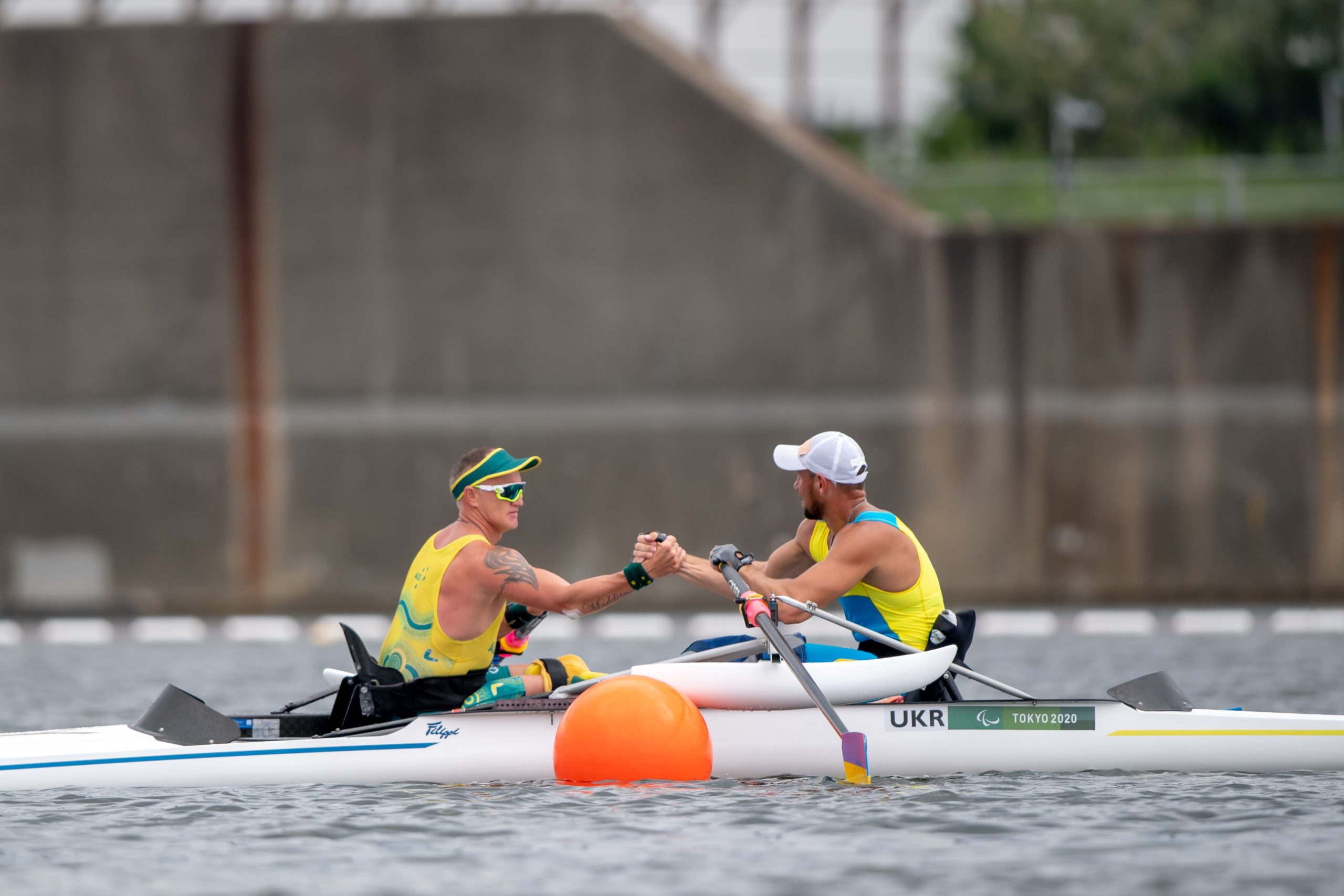BY VOLKER NOLTE
PHOTO BY ED MORAN
To continue reading…
This article is exclusively for Rowing News subscribers. For as little as $5 a month, you can get access to the best quality, independent reporting on all the issues that matter to the North American rowing community.
Already a subscriber? Login
The history of the Paralympic Movement is fascinating, and the performances of para athletes are simply mind-boggling. Special sports events for people with varying degrees of impairment were organized to give those athletes fair chances to compete. While sports for athletes with impairments have existed for a long time, they were not widely known until recently. A sport movement that was invented after World War II to assist many injured veterans and civilians has evolved into the spectacular competitions that we now witness during the Summer and Winter Paralympic Games. You can’t help but admire the spectacular performances of these athletes, especially when you take a closer look at their individual challenges.
To gain wider recognition, the first international contests for impaired athletes were held strategically after the Summer and Winter Olympics. This meant that these events were parallel Games to the Olympics, which is why paralympics was chosen—it derives from the Greek para, which means “beside” or “alongside.”
To ensure fair competition, criteria were adopted to qualify athletes of equal ability—the so-called “classifications.” In rowing, a relatively simple classification system was established based on the body parts an athlete can use: arms and shoulders; trunk and arms; legs, trunk and arms. Also included are athletes who are impaired visually. World Rowing named the categories originally after these descriptors but switched to PR1, PR2, and PR3–the number indicating the degree of functionality.
Para rowing has been included at the World Rowing Championships since 2002. It was introduced into the Paralympic program in 2005, and the first Paralympic events took place in Beijing in 2008. While the Paralympics are held separately from the Olympics and occur shortly thereafter using the same venues, World Rowing went a step further and integrated para rowing completely in the World Rowing Championships. Since 2018, the para-rowing program consists of nine events: PR1 single, PR2 single, and PR3 pair for women and men, as well as gender-mixed PR2 double, PR3 double, and PR3 four. The para-rowing program for the 2024 Paris Paralympics will consist of the PR1 single for women and men, together with the three mixed boats: PR2 double, PR3 double, and PR3 four.
Rowing’s system is easy to understand and makes sense—the more parts of your body you can employ, the faster you can row, and separating athletes accordingly puts them on an even footing. Rowing’s three categories are much easier to comprehend than, say, the 15 classifications in Paralympic swimming.
To make sure the definitions of the different classes were respected, rules were introduced. For example, PR1 rowers had to be strapped to the seat at the chest to prohibit upper-body swing, and the legs of PR2 rowers were strapped to the boat to prevent using the legs. As is often the case in competitive sports, every inch of advantage was sought by rowers and their coaches. Result: How tightly the straps were wrapped around athletes became a contentious issue before races.
To eliminate any room for interpretation, the rules were changed. PR1 rowers are now strapped at a lower body point, thus making it possible for rowers with some core muscle use to include the upper body in their stroke. Of course, the more body swing a rower generates, the more stroke length increases. Hence, in PR1 races, rowers with the greatest ability to use their core usually win, while real arms-and-shoulder athletes, such as sculler Steven Haxton, who represented the U.S. in the 2020 Paralympics, have virtually no chance. Similar results can be seen with PR2 doubles, where the leading crews use some leg movement, even with fixed seats.
What’s especially troubling about the blurring of the classification system is that it appears that some involved in making the decisions also coached rowers with a higher ability to use their core. PR1 can be described no longer certainly as “arms and shoulder” rowing, and “trunk and arms” rowers should be classified more accurately as PR2+. The lay spectator may not notice the differences, but the athletes on the water are plainly suffering the consequences, and rowing experts are justified in regarding the changes as an unfair manipulation of the classification system.
As para rowing has developed and became more serious, small differences in the impairments of athletes have impacted performance on the water considerably. More classification categories with more precise assessments of athlete ability would complicate a system whose virtue was simplicity.
Another idea is to handicap athletes according to their impairments. Such a system would allow racing different boat classes in the same heat, which would fill up lanes at regional and national regattas with a small number of entries. The inevitable challenges, however, remind me of the “fiddle factor” that Penny Chuter, the former technical director of British Rowing, employed to equalize lanes during seat races on windy courses. While no one can question his expertise or intentions, not everyone agreed with his methods—which seems to lie in the nature of our sport.

